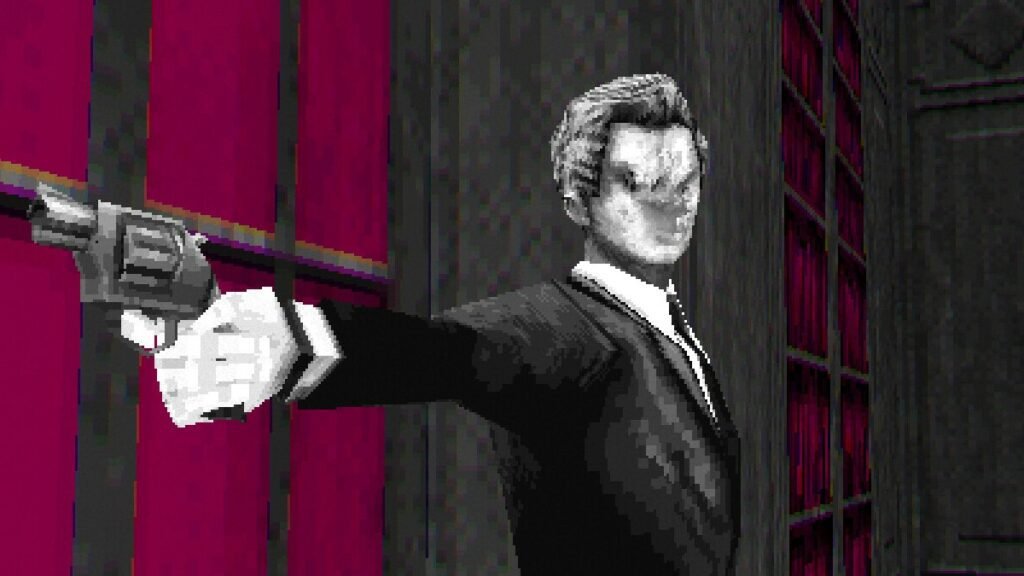I recently spoke to the developers of Lorelei and the Laser Eyes to find out more about the process of making games. Simon Flesser (SF) was kind enough to do an interview with us and explain more about the background and creation of the game.
Lorelei and the Laser Eyes did incredibly well, and most reviewers (including ours) have given it a high score. During our interview, I made sure to find out what it took to make such a great game and what inspires that creative process.
GH: What were the inspirations that led to the supporting characters of this game, as well as all their quirks that add to the exploration of the conceptual elements of the game?
SF: Characters tend to just grow naturally, as you write them you get to know them better, and their identities and their own ideas start to take shape. In the case of the Man, he is inspired by the creative process itself, and in a way he is a portrait of the game with his constant tricks and surprises, while the Woman is the player.
GH: The collage element, of layering photos on the environments was a very striking decision. Can you tell us more about it? What line of experimentation or what inspiration led to that rendering technique?
SF: A lot of, if not all, our decisions and ideas come from a production perspective. We usually try to come up with concepts that will fit the scope and skillset of the team. We simply do not have the resources to texture an entire mansion realistically, so instead we try to circumvent the problem by coming up with visual concepts and narratives that will fit our needs. In this particular case we were thinking that this would communicate ambivalence, like separate worlds or memories existing on top of each other, in a fragmented dream.
GH: At the end, for me, the game is an experience of how to look back at life. How to consider identity and reframe events. But I don’t know if that is necessarily what you wanted. Is there anything specific you want the player to walk away with, a feeling, an idea, a concept? Or did you want it to be as open as the player experience of playing the game?
SF: I think it is best that I don’t project my, or our ideas, on to players, so they can form their own ideas and thoughts about Lorelei and the Laser Eyes. I do find that a lot of our games share themes like memories and mortality, but we never set out to have a central theme or idea in our games, instead they form subconsciously during the project. I think that’s the only way to create something that feels true and natural.
GH: Lorelei and the Laser Eyes is scoring really high reviews. Are we going to see a sequel to the game in the future? Something based in the same universe?
SF: Likely not, we’ve never done sequels.
GH: Considering the ‘random’ elements of each puzzle, can you walk us through your design and testing process to ensure that the puzzles were balanced?
SF: The difficult part of puzzles, or any design, is about communication. In Lorelei and the Laser Eyes, most puzzles are built around the idea of the players understanding the connection between things. In a way, it is like communicating with someone without knowing their language. We mostly test puzzles on the rest of the team. To me it’s never really about the difficulty of the puzzle, but rather if the idea feels interesting to the one solving it. If a puzzle has elements that sparks the imagination for the solver, then it has succeeded.
GH: Was there a time during development where you weren’t sure the game would live up to the clear acclaim it did, do you feel like you have a feeling or know when a game is destined to do well?
SF: In the end, for us, we can only make what we want to make, or find interesting. If we start thinking too much about what the audience will think about it or whether they will like it or not, it is no longer our creation.
Honestly, that’s a great answer. It really shows that when the art is at its purest, when you’re focused on making what you want and not just what is likely to sell, that you get something people tend to like. It’s something we wish we saw more of in this industry, because trends tend to take over development, but trends start from great ideas executed well—and that comes from this kind of mindset.
I know our reviewer was likely hoping for a yes answer for the sequel question, but it looks like we may not see one. Either way, Lorelei and the Laser Eyes is a great example of what they can do with new IPs, and we’re looking forward to what’s coming in the future.





